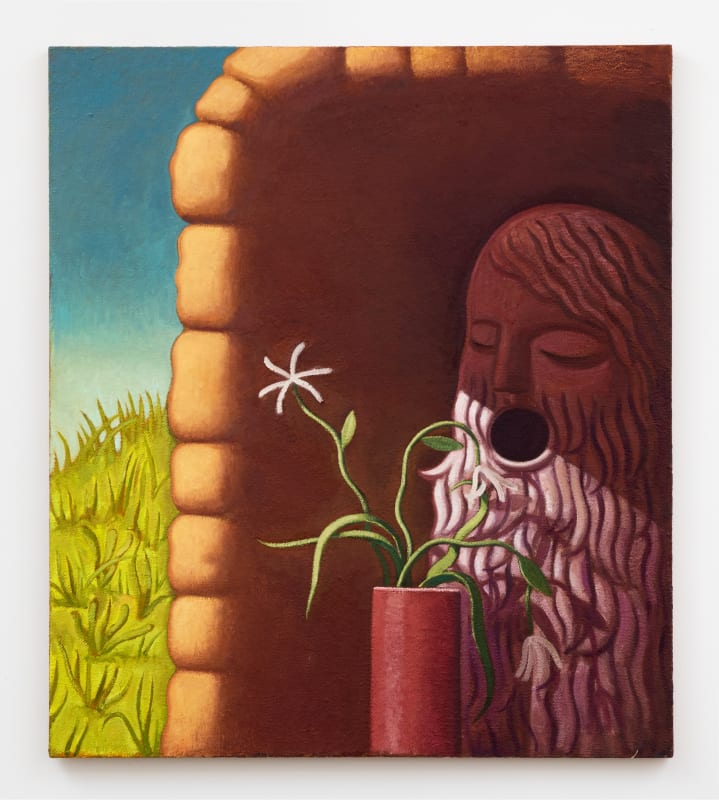HESSE FLATOW is pleased to announce the opening of Hank Stamper’s Bones, an exhibition of paintings by Nat Meade, marking his second solo-presentation with the gallery.
A cross between sage philosopher, woodsy outdoorsman, hopeless romantic, and impressionable youth, the bearded figures in Nat Meade’s paintings and works on paper collectively mine masculine archetypes associated with the American West. Folk heroes found in American Regionalism and Counter-culture icons of the 50s and 60s frame the idealism of Meade’s characters as they voyage through land and water in search of adventure and enlightenment. Some are accompanied by fellow seekers forming a brotherly coalition; others travel with a horse as their codependent companion.
Meade utilizes narrative elements not only to situate figures and objects in context but as a lens through which to disrupt the way archetypes are formed and deployed. The trope of the wayfaring pilgrim is inseparable from the prophet who in the act of storytelling entices his followers with the promise of a secret knowledge. Yet, in Meade’s works, a pale, petrified “master” awaits at the top of the mountain, nothing more than an empty vessel standing lifeless next to a vase of budding flowers, making the aspirational journey disenchantingly futile.
Seeking in vain, false prophets, and related American myths extend to another kind of passage within Meade’s works, particularly those involving selfhood as one transitions from adolescence to adulthood into old age. Having grown up in Oregon, romanticized notions of loggers and lumberjacks, hippies, college football, and father-and-son relationships occupied Meade’s frames of reference. Protagonists such as Hank Stamper (Sometimes a Great Notion, 1964) and Randle Patrick McMurphy (One Flew Over the Cuckoo's Nest, 1962) serve as touchstones, though increasingly Meade has experienced a disconnect with these sources.
The exhibition’s title alluding to Stamper’s bones reinforces the specter of certain male archetypes as expired relics. In the context of a current cultural reckoning, where men are being asked to confront their destructive roles in Western history and society, Meade recognizes a crisis of identity, and responds by repurposing masculine models in passive and vulnerable states. Repetition functions both to underscore the absurdity of subscribing to dubious ideals – a Sisyphean task in its own right – and furthermore to bolster the creation of new paradigms as a much-needed recourse.


